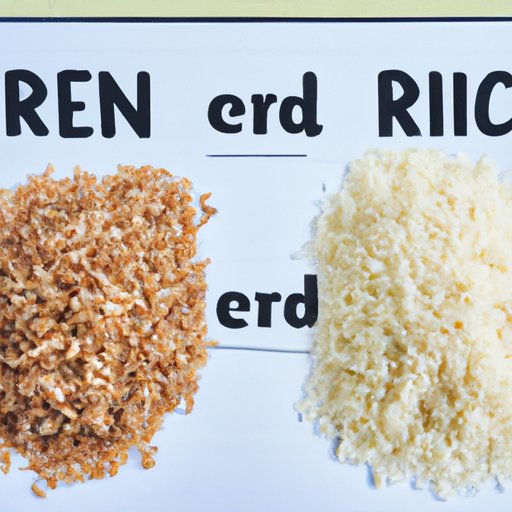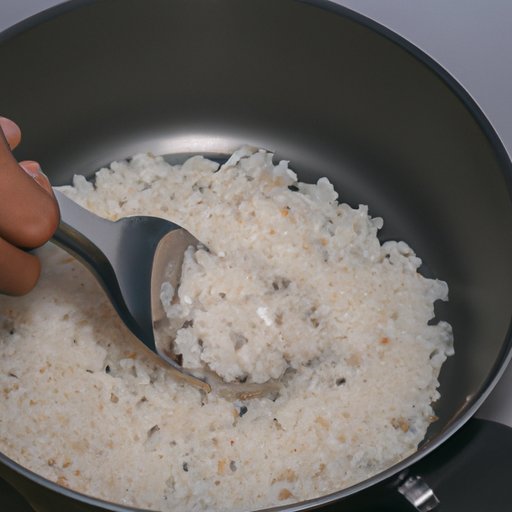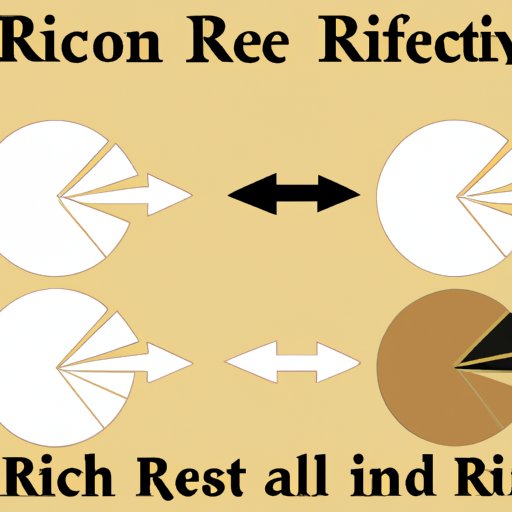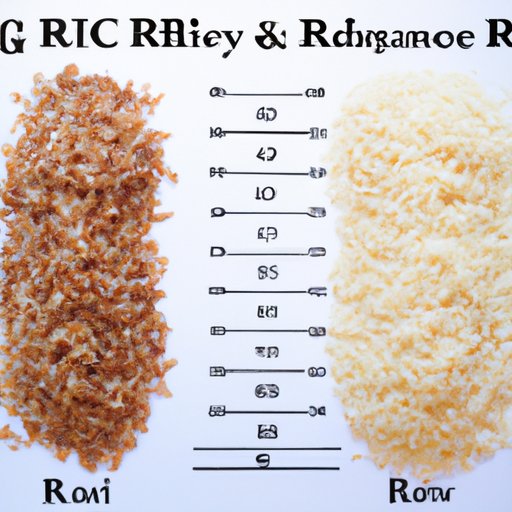Introduction
When it comes to deciding what to eat, there are a lot of options out there. One of the most common questions is whether white rice or brown rice is healthier. There is a lot of debate around this topic, with some people claiming that white rice is the healthier option and others saying that brown rice is the way to go. To help make sense of this debate, this article will explore the nutritional benefits, cooking techniques, health risks, and environmental impact of white rice and brown rice, as well as their cultural significance.

A Comparison of Nutritional Benefits between White Rice and Brown Rice
Both white and brown rice contain macronutrients like carbohydrates, protein, and fat. However, brown rice is higher in fiber, vitamins, and minerals than white rice. According to a study by the Department of Nutrition at Mahidol University in Thailand, brown rice contains more vitamins B1 and B3, as well as more iron, magnesium, and zinc than white rice. It also has higher levels of antioxidants, which can help protect against chronic diseases like heart disease and cancer.

Cooking Techniques to Enhance the Health Benefits of White Rice and Brown Rice
In addition to the nutritional benefits of white and brown rice, there are several cooking techniques that can help to enhance their health benefits. Soaking or rinsing the rice before cooking can help to reduce the amount of phytic acid and other anti-nutrients present in the grain. Adding healthy fats like olive oil or coconut oil while cooking can improve the absorption of vitamins and minerals. Finally, adding herbs and spices can add flavor and increase the antioxidant content of the dish.

Exploring the Health Risks Associated with Eating White Rice or Brown Rice
Although white and brown rice are both nutritious, there are some potential health risks associated with eating them. White rice has a high glycemic index, which means it can cause spikes in blood sugar levels. Additionally, both white and brown rice can contain high levels of arsenic, depending on where they were grown. Finally, both types of rice contain phytates, which can bind to minerals in the gut and prevent them from being absorbed.

An Analysis of the Glycemic Index of White Rice Versus Brown Rice
The glycemic index (GI) of white rice and brown rice can vary depending on the type of rice and how it is cooked. For example, long grain white rice has a GI of 56, while short grain white rice has a GI of 64. Brown rice also varies, with long grain brown rice having a GI of 55 and short grain brown rice having a GI of 68. The glycemic load (GL) of a food is another important factor to consider. The GL of white rice is 15, while the GL of brown rice is 11.
These numbers indicate that white rice can cause more of a spike in blood sugar levels than brown rice. This is because white rice has a higher GI and GL, meaning that it breaks down faster in the body and causes a higher spike in blood sugar levels. Eating white rice in moderation, along with other low-GI foods, can help to keep blood sugar levels stable.
A Look at the Environmental Impact of Growing White Rice and Brown Rice
The environmental impact of growing white rice and brown rice is an important consideration when deciding which type of rice to eat. White rice requires more water to grow than brown rice, which can lead to water shortages in areas where it is grown. Additionally, white rice is often grown with the use of pesticides and fertilizers, which can contaminate soil and water sources. Finally, white rice has a higher carbon footprint than brown rice due to its higher water usage and the use of chemical inputs.
Exploring the Cultural Significance of White Rice and Brown Rice
White rice and brown rice have been part of different cultures and cuisines for centuries. White rice was first cultivated in China over 5,000 years ago and has since become a staple in many Asian countries. Brown rice, on the other hand, is native to India and is a popular ingredient in South Asian dishes. Both white and brown rice are also commonly used in Middle Eastern and Latin American cuisine.
The Role of White Rice and Brown Rice in a Balanced Diet
White rice and brown rice can both be part of a balanced diet, as long as they are eaten in moderation. Eating a variety of whole grains, such as quinoa, oats, and barley, can help to ensure that your body is getting all the nutrients it needs. Additionally, adding healthy fats and herbs and spices while cooking can help to enhance the nutritional value of the dish.
Conclusion
White rice and brown rice are both nutritious and can be part of a balanced diet. While white rice has a higher glycemic index and can cause spikes in blood sugar levels, brown rice is higher in fiber, vitamins, and minerals. Additionally, white rice has a higher environmental impact due to its higher water usage and the use of chemical inputs. Ultimately, both types of rice have their own unique nutritional benefits and cultural significance, and should be enjoyed in moderation as part of a varied diet.
(Note: Is this article not meeting your expectations? Do you have knowledge or insights to share? Unlock new opportunities and expand your reach by joining our authors team. Click Registration to join us and share your expertise with our readers.)
